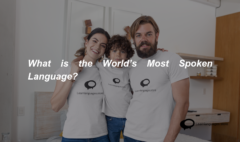20 Must-know Body Parts in Korean Language: From Head to Toe
20 Must-know Body Parts in Korean Language: From Head to Toe
For efficient communication, learning the names of bodily parts in Korean is crucial, especially when discussing discomfort, asking for help, or having regular dialogues about one’s health and well-being. From head to toe, we’ll go through 20 essential body parts in Korean in this post. You’ll be more able to communicate your ideas and comprehend talks about the human body if you get familiar with these terminology.
Estimated reading time: 2 minutes
머리 (meori) – Head: The 머리 (meori) refers to the head, including the hair and skull.
얼굴 (eolgul) – Face: 얼굴 (eolgul) represents the facial area, including the eyes, nose, mouth, and cheeks.
눈 (nun) – Eye: 눈 (nun) refers to the eye, one of the most important sensory organs.
코 (ko) – Nose: 코 (ko) signifies the nose, which is responsible for the sense of smell.
입 (ip) – Mouth: 입 (ip) represents the mouth, used for speaking, eating, and drinking.
귀 (gwi) – Ear: 귀 (gwi) refers to the ear, used for hearing and maintaining balance.
이마 (ima) – Forehead: 이마 (ima) represents the forehead, the area between the eyebrows and hairline.
목 (mok) – Neck: 목 (mok) signifies the neck, connecting the head to the rest of the body.
어깨 (eokkae) – Shoulder: 어깨 (eokkae) refers to the shoulder, connecting the arm to the torso.
팔 (pal) – Arm: 팔 (pal) represents the arm, extending from the shoulder to the hand.
손 (son) – Hand: 손 (son) signifies the hand, comprising the fingers, palm, and wrist.
가슴 (gaseum) – Chest: 가슴 (gaseum) represents the chest, the area between the neck and abdomen.
배 (bae) – Abdomen/Stomach: 배 (bae) refers to the abdomen or stomach region, responsible for digestion.
등 (deung) – Back: 등 (deung) signifies the back, the area opposite the chest.
엉덩이 (eongdeong-i) – Hips: 엉덩이 (eongdeong-i) represents the hips, located on either side of the pelvis.
다리 (dari) – Leg: 다리 (dari) refers to the leg, extending from the hip to the foot.
무릎 (mureup) – Knee: 무릎 (mureup) signifies the knee, the joint connecting the thigh and lower leg.
발 (bal) – Foot: 발 (bal) represents the foot, used for walking and maintaining balance.
발가락 (balgarak) – Toe: 발가락 (balgarak) refers to the toe, the digits at the end of the foot.
발목 (balmok) – Ankle: 발목 (balmok) signifies the ankle, connecting the foot to the leg.
Learn Languages Store
Vashi,
Email: services@learnlanguages.store










